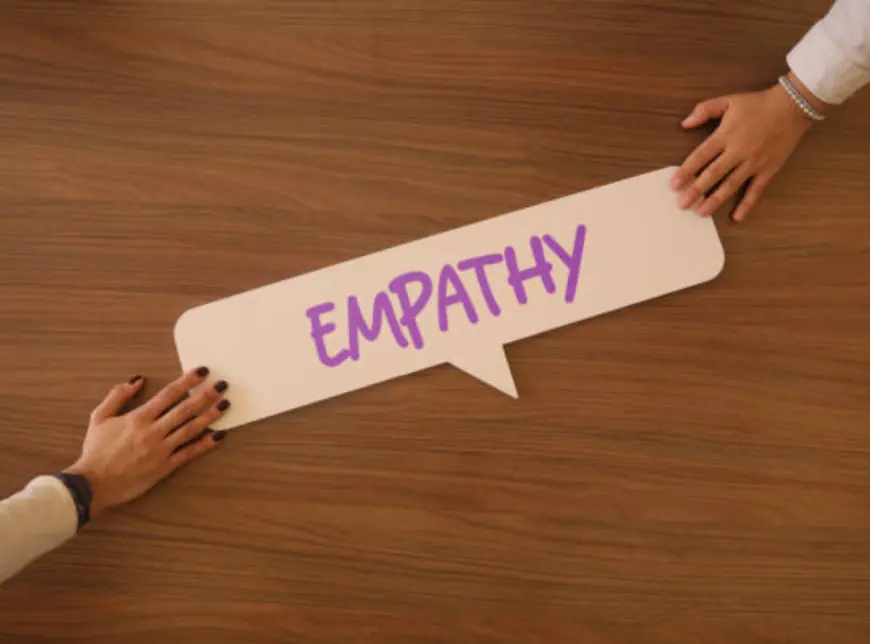School-wide empathy campaigns that unite
Empathy campaigns foster emotional growth, reduce conflict, and build unity in schools. Discover how whole-school efforts create lasting compassion and change.

In today’s increasingly diverse educational landscape, emotional intelligence is just as vital as academic achievement. Among the many values schools can instill, empathy stands out as a powerful tool for creating inclusive and understanding communities. In response to growing concerns about bullying, isolation, and social division, many schools are launching empathy campaigns that go beyond classroom discussions. These campaigns aim to build a culture of compassion across entire campuses, encouraging students, staff, and families to see the world through one another’s eyes. When done thoughtfully, empathy-based programs can unite schools in ways that foster long-term respect, cooperation, and social harmony.
Why Empathy Campaigns Matter in Education
Empathy isn’t just about being kind; it’s about deeply understanding another person’s feelings, struggles, and perspectives. Studies in educational psychology have shown that children who learn empathy early are better equipped to handle conflict, resist peer pressure, and contribute to healthier school environments. That’s why empathy campaigns are so crucial. They provide structured opportunities for students to engage in activities that broaden emotional awareness, such as storytelling sessions, peer mentorship, and community service projects.
More than isolated acts, these initiatives promote emotional literacy at a systemic level. Teachers often report decreased behavioral issues and increased cooperation among students when empathy becomes part of the daily school culture. For this reason, school districts and educators are no longer seeing empathy as a "soft skill" but as an essential foundation for both academic and personal success.
Designing Empathy Campaigns That Engage the Whole School
Launching an empathy campaign that unites an entire school takes more than a motivational assembly or a weeklong theme. It requires planning, staff training, and a consistent integration of empathy-building practices into everyday school life. For example, schools have successfully implemented activities like “kindness weeks,” where students complete daily challenges related to compassion, or “empathy circles,” where peers discuss personal stories in a safe and respectful environment.
Educators can also tie empathy into existing curriculum areas. Literature and social studies classes are ideal for exploring themes of human experience, while art and music allow students to express and reflect on emotions creatively. In successful models, administrators ensure that empathy is not an add-on but embedded into policies, classroom management, and student leadership.
One of the most effective strategies is involving parents and caregivers. Empathy doesn’t end at the school gate; it must be practiced at home and in the community. Hosting family workshops, student-led conferences, and open-dialogue nights helps reinforce the message that empathy is a shared value, not just a school project.
Strengthening Campaigns Through Community Support and School Donations
For empathy campaigns to reach their full potential, community involvement is critical. Local businesses, nonprofits, and civic organizations often play an essential role in offering resources, funding, and volunteering. One especially impactful area is school donations in Georgia, where charitable giving from individuals and foundations has helped schools implement comprehensive empathy initiatives. These donations have funded everything from anti-bullying workshops and student wellness centers to classroom materials and teacher training focused on social-emotional learning.
Rather than seeing donations as simple transactions, many schools are building lasting relationships with donors. By showing how empathy campaigns benefit the entire school ecosystem, including academic performance, student behavior, and family engagement, schools can make a strong case for continued support. In Georgia, these partnerships have also led to mentorship programs and joint community events, showing how collective empathy can ripple far beyond school walls.
Student-Led Movements: The Heart of Every Campaign
While staff and administration provide the structure, students themselves often become the most passionate champions of empathy. Giving young people the tools to lead and shape these campaigns empowers them to create change from the inside out. Peer-to-peer initiatives like student ambassadors, empathy clubs, or student-led service projects allow learners to take ownership of the school’s emotional climate.
When students see their voices matter, engagement naturally increases. One middle school in Atlanta saw a dramatic shift after launching an empathy video challenge, where students filmed short stories about helping classmates through difficult times. The result was a wave of genuine connection across grade levels, and even among teachers, proving that vulnerability can foster strength.
Empowering youth through these efforts not only nurtures empathy in the moment but also shapes future leaders who understand the value of emotional intelligence. As these campaigns evolve, students become role models for younger peers, creating a ripple effect of kindness and understanding throughout the school community.
Overcoming Challenges and Building Sustainability
Even the most well-intentioned empathy campaigns face challenges. Burnout, lack of funding, and competing priorities can derail momentum. That’s why sustainability must be built into the foundation. Regular evaluation, student feedback, and staff reflection are essential tools for refining and adjusting the campaign’s focus.
One effective strategy is setting small, measurable goals. Instead of aiming to change the entire school climate overnight, teams might focus on improving lunchtime interactions, reducing playground conflicts, or increasing positive parent-teacher communication. By tracking progress and celebrating wins, schools keep motivation high and make empathy feel attainable.
Another important element is professional development. Teachers and staff need continuous training not only to teach empathy but to practice it in their relationships. When adults model empathy, especially in tough moments, students are more likely to follow suit. This modeling creates a culture where empathy isn’t preached but practiced.
Role of Technology in Modern Empathy Initiatives
In today’s digital world, empathy doesn’t stop at face-to-face interaction. Technology can also be a powerful ally in spreading compassion. Interactive platforms, virtual reality simulations, and digital storytelling tools allow students to experience the lives and emotions of people from different backgrounds.
For instance, schools have used VR programs to simulate the experiences of refugees, people with disabilities, or those affected by bullying. These immersive tools help make empathy more than just a concept, it becomes a felt experience. Social media campaigns led by students can also amplify stories of kindness, resilience, and diversity, further cementing a culture of empathy in and beyond the school.
Still, it’s vital to balance digital tools with human connection. While apps and programs are useful, nothing replaces the power of a heartfelt conversation or a shared emotional experience. When used wisely, technology complements, not replaces, the human essence of empathy.
Final Thoughts
In a world where division and misunderstanding can feel overwhelming, empathy campaigns offer a hopeful counterbalance. They remind us that change doesn’t always start with policies or politics; it can begin with a simple gesture of understanding in a school hallway. When entire schools commit to building empathy, from the front office to the last classroom, the result is more than improved test scores or fewer disciplinary issues. It’s a community where every individual feels seen, heard, and valued.
Creating such a culture takes effort, creativity, and commitment. But as more schools embrace this path, we move closer to a society rooted in compassion. If students grow up learning to care about one another’s experiences, imagine the kind of future they can build together.
What's Your Reaction?
 Like
0
Like
0
 Dislike
0
Dislike
0
 Love
0
Love
0
 Funny
0
Funny
0
 Angry
0
Angry
0
 Sad
0
Sad
0
 Wow
0
Wow
0



















































